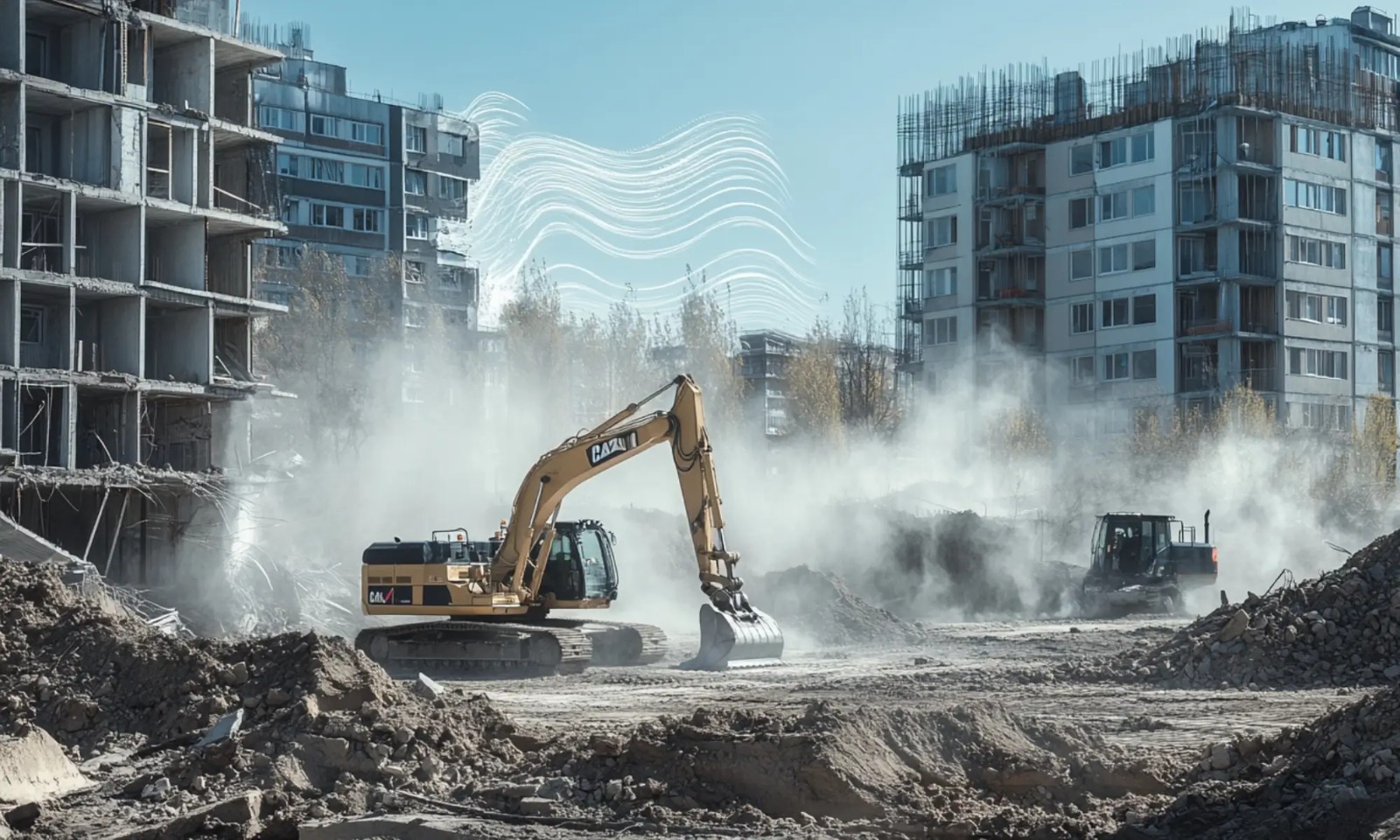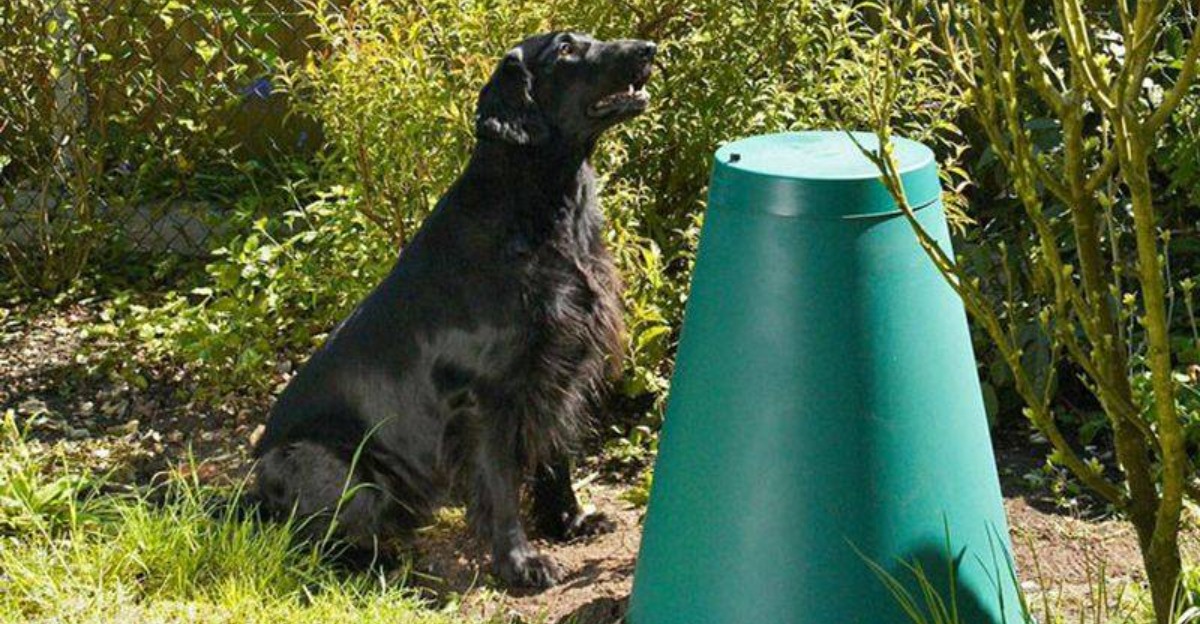
How noise pollution (urban traffic, construction) affects small pets / birds.
In bustling urban landscapes, constant noise from traffic, construction, and human activity creates a stressful environment not only for humans but also for small pets and birds. Chronic exposure disrupts their communication, behavior, reproduction, and overall health, making them vulnerable to stress, hearing damage, and long-term ecological consequences, highlighting the urgent need for noise mitigation and animal-friendly urban planning.
🐶 Pet Star
55 min read · 8, Oct 2025

Introduction
Noise pollution—defined as unwanted or harmful sound that disturbs the natural rhythm of life—is one of the most overlooked environmental stressors in urban ecosystems. While it’s widely acknowledged that loud and constant noise affects human mental and physical health, its profound effects on small pets and birds often go unnoticed.
Urban environments are filled with the cacophony of traffic horns, construction machinery, industrial operations, and human activity. These persistent sounds can reach decibel levels harmful not just to humans but also to animals whose auditory systems are often far more sensitive. For instance, dogs and cats hear frequencies between 40 Hz and 60,000 Hz—far beyond the human range of 20 Hz to 20,000 Hz. Birds, too, rely heavily on acoustic signals for communication, mating, and territory defense, making them particularly vulnerable to noise interference.
This article explores the multifaceted ways in which noise pollution from urban traffic and construction impacts small pets and birds—physiologically, behaviorally, and ecologically. It also discusses preventive and mitigation measures that pet owners, urban planners, and communities can adopt to protect these voiceless victims of the urban soundscape.
Section 1: Understanding the Sources and Scale of Noise Pollution
Urban environments are saturated with diverse sources of noise. The two most prominent contributors—traffic and construction—create a continuous background hum punctuated by sudden loud peaks that can be especially distressing to animals.
- Traffic Noise:
- Constant vehicle movement, honking, sirens, and tire friction produce steady noise levels between 70 and 90 decibels (dB).
- Sudden bursts—like a motorcycle revving or a truck braking—can exceed 100 dB, similar to a rock concert or a chainsaw.
- Pets living near highways or busy streets face unrelenting exposure to such sounds day and night.
- Construction Noise:
- The use of heavy machinery, drills, and hammers generates intermittent but high-intensity noise, often reaching 120 dB.
- For birds nesting near construction sites or pets in nearby homes, this sudden and irregular noise pattern is particularly disorienting.
- Other Urban Sources:
- Air traffic, public events, loudspeakers, and even domestic appliances like vacuum cleaners contribute to the overall noise environment.
- While individually tolerable, their cumulative effect can create constant auditory stress.
Section 2: Physiological Impacts on Small Pets
1. Elevated Stress and Cortisol Levels
Noise pollution acts as a chronic stressor. Studies have shown that pets exposed to persistent urban noise exhibit elevated cortisol—the stress hormone.
- Dogs and cats living in noisy areas show signs of anxiety, pacing, and excessive grooming.
- Chronic stress affects digestion, immunity, and even lifespan.
- Continuous loud sounds can trigger “fight-or-flight” responses, keeping the animal’s body in a state of hypervigilance.
2. Hearing Damage
Prolonged exposure to loud sounds (above 85 dB) can damage the delicate hair cells inside the inner ear, leading to temporary or permanent hearing loss.
- Dogs often respond by becoming unresponsive to commands or external stimuli.
- Birds, whose auditory range is fine-tuned for specific frequencies, may lose the ability to recognize songs or alarms.
3. Cardiovascular and Neurological Effects
Research indicates that long-term exposure to loud environments may elevate blood pressure, disrupt sleep cycles, and alter brain chemistry in animals.
- Pets may experience restlessness, tremors, or seizures.
- Noise-induced sleep deprivation can hinder growth, healing, and immune function.
Section 3: Behavioral Changes in Small Pets
Behavioral alterations are often the first visible signs of noise stress.
1. Fear and Anxiety Responses
- Dogs may cower, bark excessively, or hide during construction or traffic noise.
- Cats may retreat into enclosed spaces and avoid food or social interaction.
- Hamsters, rabbits, and other small mammals can freeze or exhibit erratic movement patterns when startled by sudden sounds.
2. Aggression and Social Withdrawal
- Prolonged stress can cause normally calm pets to become aggressive or withdrawn.
- Multi-pet households experience more frequent conflicts as animals mirror each other’s anxiety.
3. Destructive Behavior
- Chewing furniture, scratching walls, or urinating indoors are often misinterpreted as disobedience when they’re actually stress responses.
4. Altered Sleep and Feeding Patterns
- Pets in noisy neighborhoods often show fragmented sleep and loss of appetite.
- They might become more nocturnal, trying to rest during quieter hours.
Section 4: Effects on Birds—Wild and Pet Species
Birds, both wild and captive, are among the most acoustically dependent animals on Earth. Sound plays a vital role in their survival, communication, and reproduction.
1. Disrupted Communication
Birdsong is crucial for attracting mates and defending territory. In noisy urban environments:
- Birds have to sing louder and at higher pitches to be heard over the din—a phenomenon known as the Lombard effect.
- This adaptation, however, strains vocal cords and consumes extra energy.
- Some species fail to communicate effectively, leading to decreased mating success.
2. Migration and Navigation Confusion
- Many birds use low-frequency sounds to navigate during migration. Urban noise interferes with these cues, causing disorientation and increased collision risk.
- Studies on urban pigeons and sparrows show higher rates of disorientation near airports and highways.
3. Reproductive and Nesting Disturbances
- Chronic exposure to loud noise can reduce egg production and chick survival rates.
- Birds often abandon nests near ongoing construction due to perceived threats.
- The stress hormones in birds exposed to high noise levels have been found to suppress immunity and delay growth in chicks.
4. Pet Birds and Noise
Pet birds such as parrots and canaries are also affected:
- They may stop singing, pluck feathers, or refuse food.
- Continuous exposure to loud television, traffic, or renovation noise leads to psychological stress and self-destructive behavior.
Section 5: Long-Term Ecological Impacts
The ripple effects of urban noise pollution go beyond individual animals.
- Biodiversity Decline:
- Species sensitive to sound are forced to migrate or perish, reducing local biodiversity.
- Ecosystem Imbalance:
- When certain bird species abandon areas, it disrupts insect control and seed dispersal networks.
- Adaptation and Evolutionary Pressure:
- Over time, noise pollution can drive evolutionary changes—selecting for species that can tolerate or adapt to noisy environments. For example, some city-dwelling sparrows have evolved to sing at higher frequencies.
Section 6: Mitigation and Protective Measures
For Pet Owners
- Soundproofing Homes:
- Use thick curtains, carpets, and double-glazed windows to reduce sound transmission.
- Designate a quiet “safe room” where pets can retreat during loud activities like construction or festivals.
- Behavioral Conditioning:
- Gradually expose pets to moderate levels of sound to build tolerance (desensitization).
- Use calming aids such as pheromone diffusers, anxiety wraps, or white noise machines.
- Veterinary Support:
- For pets showing chronic anxiety, consult a vet about mild sedatives or behavior therapy.
- Maintain regular check-ups for hearing and stress-related conditions.
For Bird Care and Conservation
- Urban Green Spaces:
- Planting trees and shrubs acts as a natural sound barrier and provides refuge for birds.
- Encourage rooftop or balcony gardens to attract urban bird populations.
- Protected Nesting Zones:
- During breeding seasons, restrict high-decibel construction activities near nesting areas.
- Acoustic Design in Cities:
- Urban planners should include noise-buffering zones—parks, vegetation belts, and acoustic walls—to limit sound propagation.
- Promote “quiet zones” near wildlife habitats and residential areas.
Section 7: Technological and Policy Approaches
- Noise Mapping and Monitoring:
- Cities like London and Singapore use noise maps to identify high-risk areas for both humans and wildlife.
- Similar initiatives can guide zoning laws and urban designs.
- Regulation Enforcement:
- Enforcing decibel limits for construction and traffic during specific hours can significantly reduce noise stress on animals.
- Community Awareness Campaigns:
- Educating residents about the hidden effects of noise pollution encourages responsible behavior—like avoiding unnecessary honking or using quieter construction machinery.
In the ever-expanding concrete jungles of modern cities, noise pollution has emerged as one of the most overlooked yet dangerous forms of environmental disturbance, silently affecting not only human well-being but also the physical and psychological health of small pets and birds. The constant roar of urban traffic, the pounding and drilling of construction sites, and the unending hum of industrial activity create a soundscape that is both relentless and harmful. Unlike humans, animals possess far more acute hearing abilities—dogs can detect frequencies up to 60,000 Hz and cats up to 64,000 Hz, while humans barely reach 20,000 Hz—making them exceptionally vulnerable to the impact of loud, continuous noise. Birds, too, are acutely dependent on sound for communication, navigation, mating, and territorial defense, meaning that excessive ambient noise interferes directly with their ability to survive. Urban traffic is among the chief culprits, generating sound levels between 70 and 90 decibels on average, with sudden spikes over 100 dB when horns, sirens, or brakes are involved. Construction noise is equally devastating, as jackhammers, drills, and bulldozers can produce bursts of 110 to 120 decibels, disrupting nearby homes, nests, and animal habitats. For small pets confined indoors or birds nesting in trees near urban zones, such auditory chaos translates into chronic stress and physiological damage. Scientific studies show that continuous exposure to noise leads to elevated cortisol levels—the body’s stress hormone—causing anxiety, digestive issues, immune suppression, and reduced life expectancy in animals. Dogs and cats exposed to loud environments often show visible signs of stress such as trembling, pacing, hiding, or excessive grooming. Over time, these behaviors evolve into chronic conditions, including aggression, withdrawal, and destructive habits like scratching, chewing furniture, or urinating in unusual places. Small mammals like rabbits or hamsters display startle reflexes, freezing, or erratic motion when subjected to sudden loud sounds, revealing the severe toll that unpredictable noise inflicts on their nervous systems. Physiologically, prolonged exposure to high-decibel noise can damage the inner ear’s sensory hair cells, leading to temporary or even permanent hearing loss in pets, making them less responsive to human commands or surrounding stimuli. In birds, hearing damage is particularly detrimental because their lives depend heavily on acoustic signals for survival. Birdsong, which plays a vital role in attracting mates, warning others of predators, and defending territory, becomes drowned out by the urban din. Many urban-dwelling species like sparrows and robins have adapted by singing louder or at higher frequencies to overcome background noise—a phenomenon known as the Lombard effect—but this adaptation requires extra energy and can cause vocal strain, reducing reproductive efficiency. Moreover, continuous exposure to loud sounds disrupts avian reproductive cycles, leading to reduced egg production, chick mortality, and nest abandonment. Birds nesting near highways or construction zones often display increased vigilance and restlessness, compromising feeding and parental care. Pet birds such as parrots and canaries are equally affected; they may stop singing, pluck feathers, or refuse food as manifestations of anxiety and depression induced by constant loud environments. Beyond individual animals, the ecological consequences of noise pollution are profound. Chronic noise drives sensitive species away from urban habitats, reducing biodiversity and altering ecosystem dynamics. Birds that abandon their territories leave behind imbalances in seed dispersal and insect control, indirectly affecting urban vegetation and pest populations. The constant noise also disrupts migratory patterns, as many species rely on low-frequency natural sounds for navigation; interference from urban noise sources causes disorientation and fatal collisions during migration. From a neurological perspective, both pets and birds experience elevated heart rates, high blood pressure, and disrupted sleep due to continuous auditory stimulation. Sleep deprivation weakens immunity and impairs recovery, making animals more prone to illness. For indoor pets, the problem is often exacerbated by echoing urban interiors, where sound waves bounce off walls and intensify ambient noise. To mitigate these effects, pet owners can take several protective measures such as soundproofing rooms with thick curtains, carpets, and double-glazed windows; creating “quiet zones” where animals can retreat; and using white noise machines or calming pheromone diffusers to counter external sounds. Gradual desensitization therapy—exposing pets to controlled, moderate noises—also helps them adapt to unavoidable urban sounds. For birds, conservationists recommend creating urban green belts and buffer zones that act as natural sound barriers. Dense vegetation not only absorbs noise but also provides safe nesting grounds away from direct exposure. Cities like Singapore and London have begun using “noise mapping” technologies to monitor decibel levels and identify high-risk zones for both humans and wildlife, a model other cities could emulate. Urban planners can also design quieter cities by enforcing time-based construction regulations, establishing noise limits in residential and wildlife areas, and integrating acoustic-friendly materials into urban architecture. Policies encouraging “quiet hours” near animal shelters, bird sanctuaries, and residential areas can make a significant difference. Community-level awareness is equally vital—residents should be educated about the harmful effects of unnecessary honking, loudspeakers, or night-time construction, as small actions collectively reduce the city’s overall noise footprint. For pet owners specifically, recognizing early signs of noise-induced stress—such as hiding, loss of appetite, or unusual vocalization—can prevent long-term trauma with timely intervention. Veterinarians can assist by prescribing mild anti-anxiety medications or suggesting behavioral therapies for pets struggling with chronic stress. For wild and pet birds, placing cages in quieter, shaded areas, away from street-facing windows, can drastically reduce anxiety. On a larger scale, the inclusion of “green corridors” and “silent zones” in urban planning can help restore ecological balance, offering wildlife a refuge from constant auditory assault. Ultimately, noise pollution’s effects on small pets and birds extend far beyond temporary discomfort—it disrupts their biological rhythms, damages hearing, affects reproduction, and alters community structures in ecosystems. Unlike visible pollutants, noise cannot be captured or filtered; its impacts are insidious and cumulative. Yet, with informed urban design, effective regulation, and compassionate public behavior, the situation is reversible. Quiet, when preserved, is not just a luxury for humans but a lifeline for the countless creatures that share our cities. Protecting them from the relentless roar of urban life is not merely an act of kindness—it is a crucial step toward building truly sustainable and humane cities where every life form can thrive in peace.
In modern urban environments, noise pollution has become one of the most pervasive yet underestimated threats to the health and well-being of small pets and birds, with the constant roar of traffic, the pounding of construction equipment, and the hum of human activity creating a persistent, high-decibel soundscape that disrupts natural behavior, physiology, and ecological balance, as animals such as dogs, cats, rabbits, and birds rely heavily on sound for communication, navigation, safety, and social interaction, making them far more sensitive to auditory disturbances than humans, whose hearing range is much narrower, and the result of continuous exposure to urban noise manifests in multiple forms of stress, both physiological and psychological, as chronic noise triggers the release of cortisol and other stress hormones in pets, leading to symptoms such as anxiety, restlessness, excessive grooming, trembling, pacing, hiding, loss of appetite, aggression, social withdrawal, destructive behaviors, and in extreme cases, compromised immunity and reduced life span, while for birds, whose survival depends on acoustic signals for mating, territorial defense, and predator awareness, urban noise can interfere with their song patterns, force them to sing louder or at higher pitches in a phenomenon known as the Lombard effect, strain their vocal cords, increase energy expenditure, and reduce reproductive success, with studies indicating that prolonged noise exposure can cause birds to abandon nests, decrease egg production, and impair chick development, while also disorienting migratory species that rely on natural low-frequency sounds for navigation, often resulting in collisions or missed migratory routes, and beyond individual species, noise pollution has cascading ecological effects, as displacement of sensitive species from urban habitats reduces local biodiversity, disrupts seed dispersal and insect population control, and alters ecosystem dynamics, which in turn affects other wildlife and urban vegetation, and small pets confined indoors are similarly affected, as reverberating noise inside homes, combined with exterior traffic and construction sounds, can cause fragmented sleep, irritability, and behavioral issues that are often mistaken for misbehavior rather than stress responses, while their acute hearing makes them vulnerable to hearing loss over time, particularly with exposure to sounds above 85 decibels, which can damage the delicate hair cells in their inner ears, resulting in temporary or permanent auditory impairment, and for pet birds, exposure to loud televisions, music, or nearby construction can induce feather plucking, refusal to eat, cessation of singing, and other signs of psychological distress, all of which indicate a need for intervention, including soundproofing rooms with thick curtains, carpets, and double-glazed windows, creating designated quiet areas, using white noise machines or pheromone diffusers to mitigate stress, and gradually desensitizing animals to moderate sound levels to build tolerance, as well as seeking veterinary guidance for pets displaying severe anxiety or behavioral disruption, and for urban wildlife, establishing green belts, planting trees, and maintaining vegetative buffers around nesting areas can reduce noise propagation, provide safe refuges, and enhance habitat quality, while policy measures such as enforcing decibel limits on construction and traffic, regulating work hours, creating quiet zones, and using noise-mapping technologies to identify high-risk areas can help protect both domestic and wild species, and community awareness campaigns can educate residents about the impact of honking, loudspeakers, and unnecessary noise on urban animals, fostering a culture of compassion and responsible urban living, because noise pollution is not merely a human nuisance but a serious environmental stressor with long-term consequences for animal health, behavior, reproduction, and survival, with pets experiencing stress-related illnesses and birds facing reproductive failure or forced migration, and ultimately, the cumulative impact threatens urban biodiversity and ecological stability, yet with careful urban planning, technological interventions, behavioral management, and environmental awareness, it is possible to mitigate these harmful effects, ensuring that pets and urban wildlife can live healthier, calmer, and more natural lives despite the challenges of city living, emphasizing that urban development should prioritize acoustic health as much as visual and structural design, acknowledging that the right combination of green spaces, quiet zones, sound barriers, and conscientious human behavior can significantly reduce the auditory stress experienced by small animals, providing them with a safer and more balanced environment in which to thrive, and highlighting the moral and ecological responsibility humans have to consider the hidden victims of urban noise, making quiet not just a luxury but a necessity for harmonious coexistence between people and the many small creatures that share the urban landscape, demonstrating that sustainable city planning, attentive pet care, and wildlife-friendly policies are not only possible but essential for preserving life and well-being in modern urban ecosystems.
Conclusion
Noise pollution in urban environments is not merely a human inconvenience—it is a silent yet powerful disruptor of animal life. Small pets and birds, endowed with acute hearing and reliance on sound communication, are among the most affected. Chronic exposure to traffic and construction noise leads to physiological stress, hearing loss, disrupted behavior, and even population decline in avian species.
For pets, it manifests as anxiety, aggression, and reduced quality of life. For birds, it interferes with communication, mating, and migration. The ecological consequences are far-reaching, impacting biodiversity and natural balance.
However, this issue is reversible. Through a combination of urban design, technological innovation, and public awareness, cities can evolve to become quieter, healthier habitats—for humans and animals alike. Implementing sound barriers, regulating construction noise, creating green buffers, and educating pet owners about home soundproofing are effective ways to reduce the auditory assault on small creatures.
In a truly “smart” city, progress must resonate in harmony—not noise—with the living beings that share our urban world.
Q&A Section
Q1: How does noise pollution affect small pets like dogs and cats?
Ans: Noise pollution triggers chronic stress in pets, elevating cortisol levels and causing anxiety, restlessness, and behavioral changes such as aggression or withdrawal. Prolonged exposure can also lead to hearing damage and disrupted sleep patterns.
Q2: Why are birds particularly vulnerable to noise pollution?
Ans: Birds rely heavily on sound for communication, mating, and navigation. Urban noise interferes with their songs, forces them to sing louder (using more energy), and can reduce breeding success and nesting stability.
Q3: Can constant traffic noise cause hearing loss in pets?
Ans: Yes. Continuous exposure to noise above 85 decibels can damage the sensitive hair cells in pets’ ears, leading to partial or permanent hearing loss, especially in dogs and cats living near highways.
Q4: What are the behavioral signs that a pet is stressed by noise?
Ans: Common signs include hiding, trembling, excessive grooming, barking, loss of appetite, or destructive behavior. Birds may stop singing, pluck feathers, or refuse to eat.
Q5: What can pet owners do to reduce noise stress at home?
Ans: Owners can soundproof rooms, use calming aids like white noise machines, create quiet spaces, and consult vets for behavioral or medical support. Gradual desensitization to mild noises also helps pets adapt.
Similar Articles
Find more relatable content in similar Articles

Composting Pet Waste: A Greener Way to Clean Up...
As pet ownership continues to .. Read More

Social Media for Pets: Turning Your Pet into a Digital..
From playful puppies to charis.. Read More

Virtual Vet Visits: Are Online Consultations Reliable?..
As pet healthcare embraces dig.. Read More

Pets and Mental Health: The Science Behind Emotional H..
Discover the profound impact o.. Read More
Explore Other Categories
© 2024 Copyrights by rPets. All Rights Reserved.